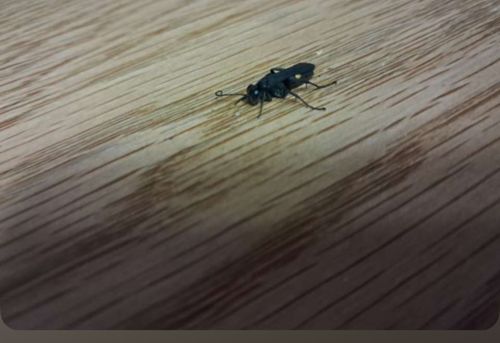Scoliid Wasp
Scientific Name: Scoliidae (a family, specific genus/species identification from image alone is difficult)
Order & Family: Order: Hymenoptera, Family: Scoliidae
Size: Typically varies from 10 to 40 mm (0.4 to 1.6 inches) in length, depending on the species.

Natural Habitat
They are typically found in diverse habitats including gardens, agricultural fields, meadows, and woodlands where their host insects (scarab beetle larvae) are present, usually in the soil.
Diet & Feeding
Adult Scoliid Wasps primarily feed on nectar and pollen from various flowers. Their larvae are parasitic and feed on the larvae of scarab beetles (such as grubs).
Behavior Patterns
Adults are active during the day, often seen flying low over vegetated areas in search of flowers or host insects. Females lay eggs on or near paralyzed host larvae. The larvae are external parasitoids, feeding on the host before pupating.
Risks & Benefits
Benefits: Scoliid wasps are beneficial as biological control agents, helping to reduce populations of destructive scarab beetle larvae, which can be agricultural and lawn pests. Risks: They can sting if provoked or handled, but are generally not aggressive towards humans. The sting is painful but usually not medically significant unless an individual has an extreme allergic reaction.
Identified on: 8/27/2025